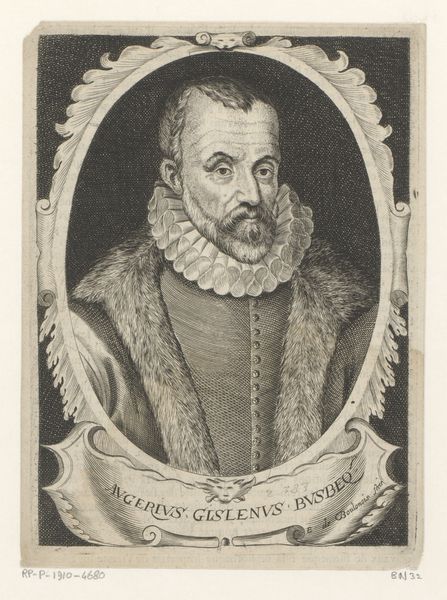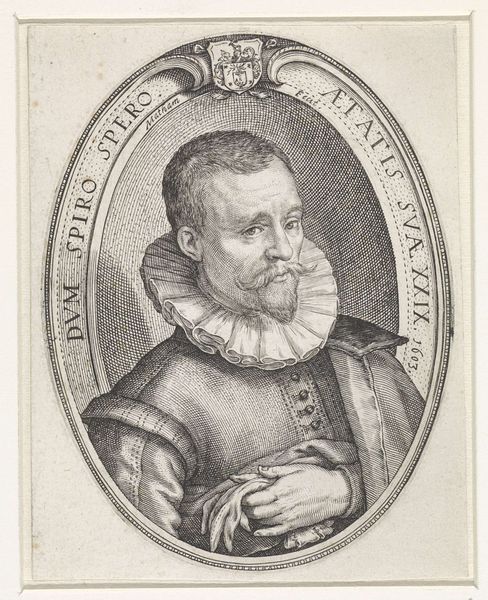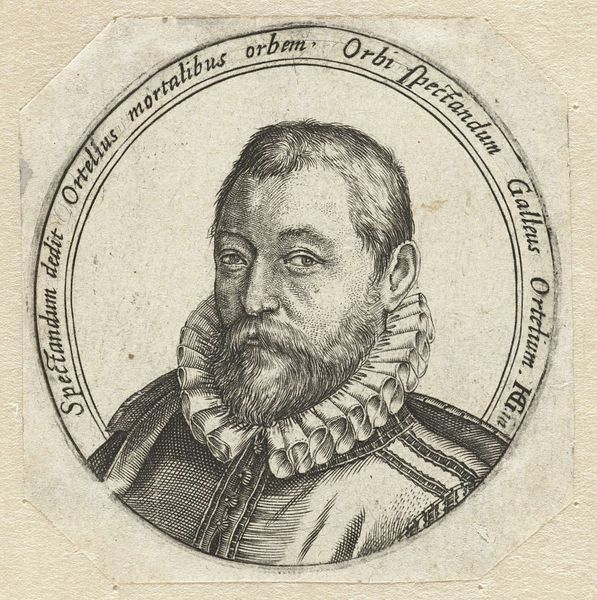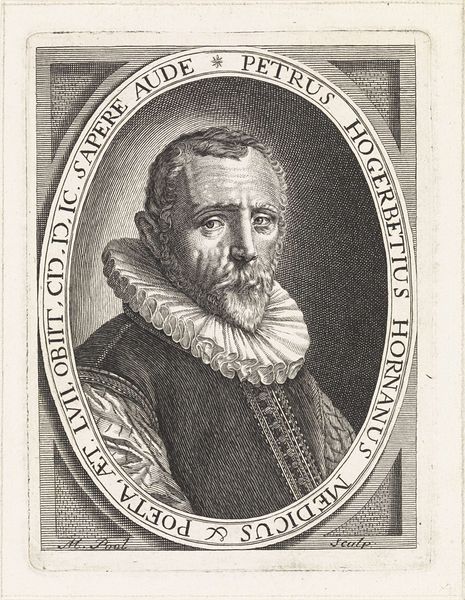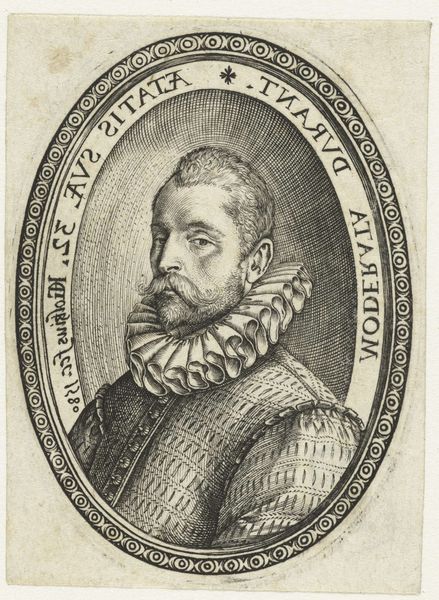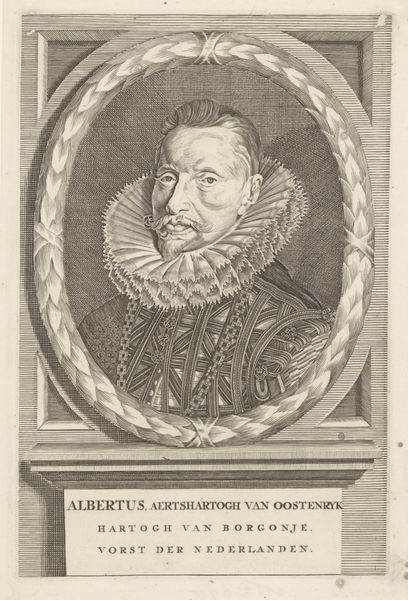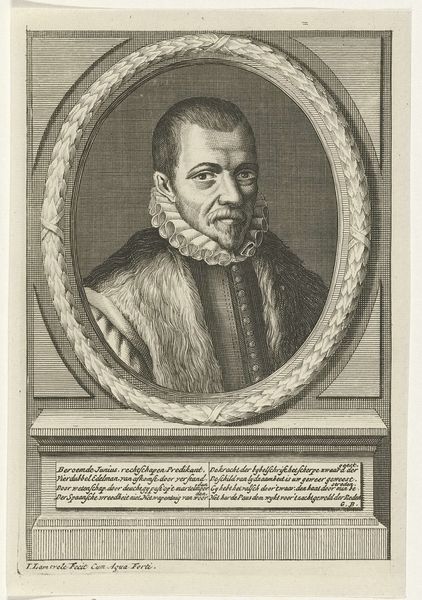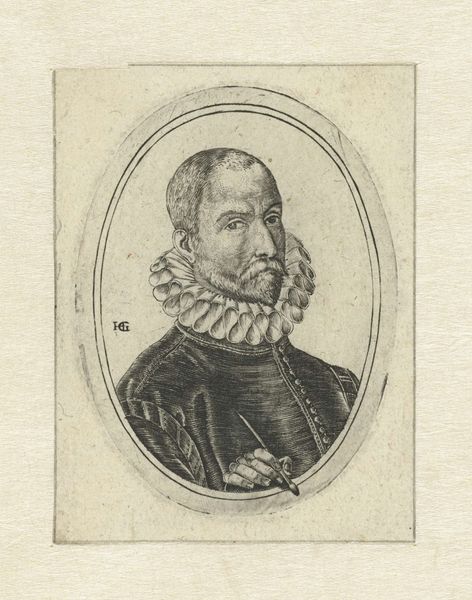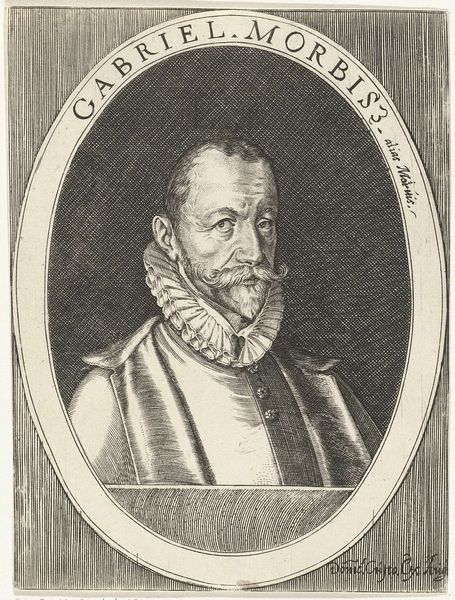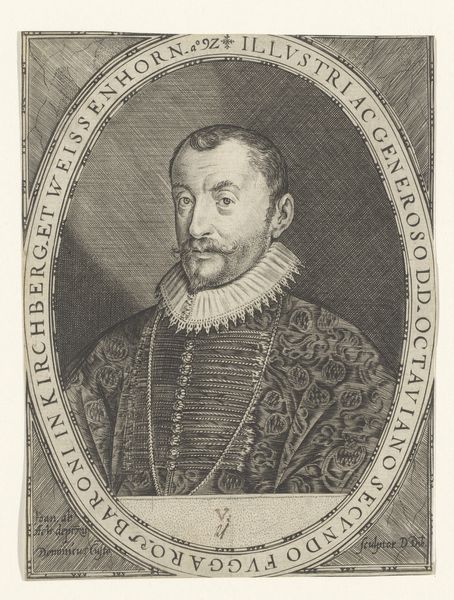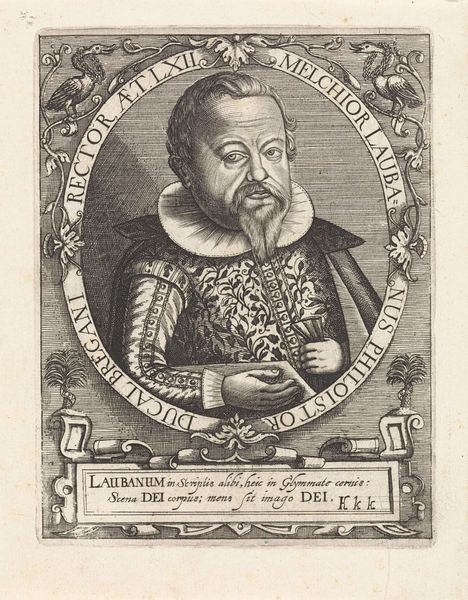
drawing, pencil
#
portrait
#
drawing
#
mannerism
#
pencil drawing
#
pencil
#
portrait drawing
#
northern-renaissance
Dimensions: height 96 mm, width 78 mm
Copyright: Rijks Museum: Open Domain
Hendrick Goltzius made this portrait of Jean Niquet using graphite on paper sometime in the late 16th or early 17th century. The work’s appearance is influenced by the inherent qualities of graphite, its texture, weight, and the gray scale it provides. Goltzius used the technique of hatching to build up tone and volume, creating the illusion of three-dimensionality on the flat surface of the paper. This technique involves drawing closely spaced parallel lines, with the density and direction of the lines determining the darkness and texture of the area. The artist engaged with skilled traditions of drawing and printmaking, where graphite was a common medium for preparatory sketches and studies. These traditions were often connected to wider social issues of labor, politics, and consumption, as drawings and prints were used to disseminate information and propaganda. The amount of work involved in the production process is evident in the intricate details of the portrait. Paying attention to materials, making, and context is key to understanding the full meaning of an artwork, blurring any assumptions we might have about high art versus craft.
Comments
rijksmuseum about 2 years ago
⋮
Hendrick Goltzius made this preparatory drawing for the engraved portrait of the merchant Jean Niquet in metalpoint, in this case with a lead stylus. Quite unusually he often drew in metalpoint. In his time, this technique had fallen out of favour and people preferred to draw with pen, brush, and chalk. One possible explanation is that Goltzius did this out of admiration for Albrecht Dürer, who had worked a great deal in silverpoint.
Join the conversation
Join millions of artists and users on Artera today and experience the ultimate creative platform.

